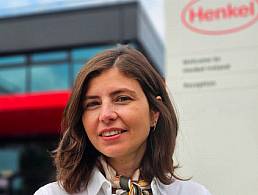Aon’s Brooke Green advocates for a human-centred approach when adopting technology in the flexible working world.
“With so much of the recruitment process being driven by digital means, HR and the people practice should continue to look for ways to optimise the candidate experience.”
That’s according to Brooke Green, who heads up the human capital solutions team at Aon in the US. She is responsible for leading nearly 700 colleagues in North America who spend their days “helping clients make better workforce decisions”.
“That includes data, analytics and advice covering the entire employee lifecycle, so companies can achieve their business objectives and build a resilient workforce,” she told SiliconRepublic.com.
Attracting and retaining talent is particularly crucial in today’s employment market. Many companies are still weathering the effects of the ‘great resignation’ trend that swept across the world in 2021.
Recent Aon research also suggested that Irish employers are struggling to retain employees who are at the early stages of their careers, and outdated hiring practices may be having an impact on companies.
‘If not thoughtfully and proactively addressed, digital technologies may impede our ability to truly connect with each other’
– BROOKE GREEN
While tech tools are increasingly helping with HR and recruitment, Green thinks that technology can sometimes create barriers in the hiring process – particularly if it is not implemented in a user-friendly manner.
Instead of helping workers, Green has seen something she terms “digital friction” take over. This refers to the “unnecessary effort” required by candidates “to navigate user-unfriendly technologies”.
This can make the hiring process a “highly frustrating one” and can “serve as a deterrent to top talent” pursuing an opportunity with a company.
“To optimise the candidate experience, companies can take a human-centred design approach to remove friction points and increase usability and intuitiveness,” she added.
“Additionally, increased focus should be placed on neurodiversity and making technology platforms more digitally accessible for all candidates.”
In general, Green warned that we are still very much “in the early stages of our collective transformation” when it comes to workplace tech.
And as automation and artificial intelligence become more prevalent, she expects that new workforce trends will take shape and “undoubtedly compel us to reimagine the future of work”.
For now, the focus is on dealing with issues in our new world of hybrid work and digital HQs.
“Working models shifted to mostly virtual during the pandemic, an experiment that worked, but today companies are moving toward hybrid working, and the challenges are real,” Green said.
“We all want the best aspects of flexibility, but we also need a way to re-establish community amongst colleagues.”
In her view, loss of connection and community with colleagues is one of the big risks in this new era of work.
“As humans, we need to feel a sense of belonging with our company and the people that we work with. If not thoughtfully and proactively addressed, digital technologies may impede our ability to truly connect with each other and cultivate community.”
10 things you need to know direct to your inbox every weekday. Sign up for the Daily Brief, Silicon Republic’s digest of essential sci-tech news.




